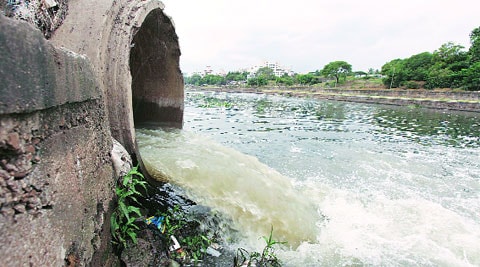 While the economy may still be in recession, there are still many roadway and bridge construction projects being approved. In strong part due to stimulus money, firms are getting awarded many construction jobs through the federal and state governments. To ensure safe work sites for both the benefit of every worker and for compliance to safety guidelines and laws, specifically designed industrial equipment is the key to outfitting workers with the right PPE to do their jobs safely.
While the economy may still be in recession, there are still many roadway and bridge construction projects being approved. In strong part due to stimulus money, firms are getting awarded many construction jobs through the federal and state governments. To ensure safe work sites for both the benefit of every worker and for compliance to safety guidelines and laws, specifically designed industrial equipment is the key to outfitting workers with the right PPE to do their jobs safely.
Along with general industrial workplace safety threats, road and bridge construction sites have their own set of hazards. Utilizing the right type of industrial supplies to address and mitigate each hazard will lead to safe work sites and compliance with industry best practices.
Let’s take a look at a number of industry hazards and identify what industrial supplies can be applied to reduce risks and the potential for injuries and lost time.
Hazard Identification And Prevention
Construction crews on roadways and bridges face a good number of unique and general hazards. Matching industrial equipment and personal protective equipment to every hazard will create a safe work environment.
Flame and fire risks are not typically associated with road and bridge work, but they are still present. Gasoline and diesel fuel are used in abundance to power construction vehicles, power tools, and generators. Solvents and resins are also highly combustible and widely used. With flammable materials in the presence of hot work, flash fires are a work site hazard. Industrial supplies, including industrial apparel made from flame resistant materials, can reduce intense heat hazards. These materials will not melt to a worker’s skin when exposed to intense heat and are also self-extinguishing.
High elevation work on bridges and even near utility and pipe trenches creates falling hazards. Fall arrest systems and lanyards are vital to preventing falling injuries and deaths. Tying off to a structural support with fall protection machine maintenance schedule industrial equipment can save lives on the job. In the same vein, falling tools or materials can cause problems for workers below. Industrial equipment such as hardhats and face shields are vital to preventing injury.
After many workers from our previous generation retired, they realized they had suffered significant hearing loss. Construction job sites can cause two types of hearing loss. Loud noises that cause actual pain will produce instant hearing loss and even elevated noise levels will cause long-term hearing loss over the course of a workday. Hearing protection is the best way to save one’s sense of hearing for each day and over an entire career. Whether it is earplugs or earmuffs, hearing protection is vital for occupational health.
Industrial Apparel
Construction work is a tough job, especially on work wear and uniforms. High quality industrial apparel is important for providing a layer of protection against cuts and abrasions, as well as the environment and weather. Clothing has to be durable with high thread count, reinforced seams, and heavy duty rivets that fit well enough to not present a hazard around moving parts, but still provide flexibility to react on the job site.
Industrial apparel can be manufactured to address multiple hazards by integrating mechanical spare parts list flame resistant and waterproof materials or high visibility stripes and coloring.
Roadside Visibility with Industrial Supplies
The big hazard for work on active roads and bridges is passing motorists. At night or during any low light conditions, the risk is even greater. Wearing brightly colored and fluorescent clothing is not adequate for protection against traffic. In fact, it will only provide visibility of up to 250 feet for oncoming traffic. At highway speeds, cars will take up to 1,200 feet to come to a complete stop.
Industrial equipment is used to increase visibility for roadside workers. Federal guidelines have set visibility requirements of 1,280 feet for workers on the job who are exposed to motor vehicle traffic. This is accomplished by retro-reflective materials. This material will actually focus and reflect light back to its source, illuminating workers to both motorists and construction vehicle drivers.
Adding retro-reflective industrial supplies to worker apparel and PPE is the only effective way to achieve the proper level of nighttime visibility. The basic idea is to highlight the human form with retro-reflective clothing and bands. The best level of high visibility clothing consists of a reflective band on a helmet, a high visibility vest, and a vertical reflective strip on a pair of trousers.
Overall, industrial supplies are designed to keep workers safe and productive. With the expected increase in government-funded bridge and road construction projects in upcoming years, it is more important than ever that all workers are outfitted with proper industrial equipment and apparel.


